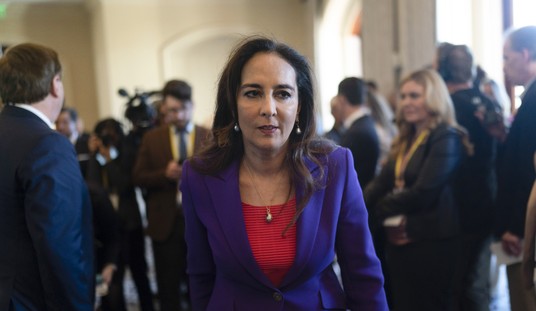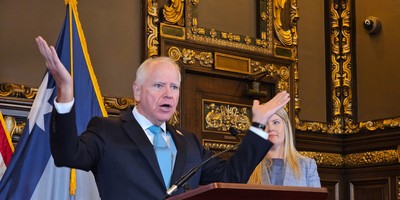Advertisement
Sure, Caroline spoke at the Democrat convention last month, following her presidential appointment to the Kennedy Center board of trustees a few weeks before. But there have also been rumors of a measure of Camelot creep—growing disaffection with Mr. Obama and how he has handled the job.
Image and spin aside, while President Obama has clearly not followed President Kennedy’s fiscally conservative approach on things like budgets and taxes, he has actually mirrored the 35th president’s learning curve in the area of foreign policy—with one difference. After several missteps, Mr. Kennedy finally decided to draw what we would call today a “red line.”
And he meant it, even though it was somewhat a case of too little, too late.
Fast-forward five decades—another October, another rogue nation (Iran), and the potential for many more missiles. Also, there is a lot of huffing and puffing about red lines. Have we learned the real lesson of October 1962?
What is often overlooked these days as we look back at the Kennedy presidency is that the red line over missiles in Cuba never should have had to be drawn in the first place. In a very real sense, a pattern of weakness on the part of JFK helped to create an irresistible temptation for Nikita Khrushchev—one that convinced the Soviet strong man that he could deploy offensive nuclear weapons just 90 miles from the United States.
Despots—crazed or otherwise, tend only to take red lines seriously if they are drawn in blood. They assume all others to be erasable and ignorable.
Recommended
Advertisement
Fifty years ago, the world came very close to blowing up. That epic nuclear standoff between the United States and the Soviet Union brought us “eyeball to eyeball” with the unthinkable. One historian wrote that we were “one minute to midnight.” It was east vs. west, communism vs. capitalism, collectivism vs. freedom, and most of all—John F. Kennedy vs. Nikita Khrushchev.
I was all of six years of age when this occurred in October of 1962, but for whatever reason, I was pretty aware of things—for a first grader in Michigan, at least. Maybe it was because I had parents who were news junkies and who talked about world affairs in front of me. By that age, I had my first history books. They were given away at the local A&P store with the right amount of detergent purchase, as I recall. I loved them. President Kennedy, a man who clearly loved history, wrote the foreword to the series.
Or maybe my particular interest in what was going on during those famous “Thirteen Days” was kindled by the drill we did in class—the one where we had to get under our desks, with the teacher admonishing us: “Don’t look at the flash.”
Of course, we all lived to see another day—and all those since. Nuclear bombs never made their way from Cuba to anywhere. Mr. Kennedy had been pretty clear to Mr. Khrushchev and his politburo cronies that if any missile left the island dominated by Fidel Castro, it would be regarded by the United States as an attack by the Soviet Union on the United States. And he told the American people on Monday, October 22, 1962 that this would result in “a full retaliatory response” from us. The fact that he had difficulty pronouncing the word “retaliatory” didn’t seem to get in the way of the message’s clarity and forcefulness.
Advertisement
The Cuban Missile Crisis has been studied ever since. I wrote my Master’s thesis on it when I was working on my political science degree many, many moons ago. [And my new novel, Camelot’s Cousin wraps around it] It’s a complicated story that cannot be fully explained with clichés, such as, “Kennedy stood up to Khrushchev and he backed down.” Not that simple. Not at all.
The truth is that, while John F. Kennedy hit the ground running when he became president, when it came to foreign policy he was running the wrong way. Sound familiar? First, there was what happened at the Bay of Pigs—a matter handled so badly by Mr. Kennedy and his group-thinkers that most of the time the word “fiasco” is attached to the story.
That was April 1961. A few months later—in June—Kennedy flew to Vienna, Austria to meet with Mr. Khrushchev. By all accounts—including, significantly, Kennedy’s own analysis—the meeting was an unmitigated disaster. The Soviet leader bullied Kennedy and the young president was shaken by the experience, telling one friend: “He just beat the hell out of me. I’ve got a terrible problem if he thinks I’m inexperienced and have no guts.” It was a monumental understatement.
A couple of months later, construction of a wall began in Berlin—becoming a metaphor for the era. Kennedy did nothing. The next spring, Mr. Khrushchev began laying the groundwork to send nuclear weapons to Cuba to, as he said, “throw a hedgehog at Uncle Sam’s pants.” He was sure he would get away with it because of his low opinion of Kennedy.
Advertisement
As Humberto Fontova pointed out recently, what is often forgotten now as we look back 50 years is that the Kennedy administration took great pains to ignore even the possibility that such a thing could happen. Just one day before he was confronted with irrefutable proof in the form of photos taken from a U-2 spy plane, President Kennedy was mocking rumors about missiles in Cuba, blaming all the chatter on a disaffected Cuban community in Miami.
There is a lot of mythology related to the Cuban Missile Crisis—and even more political spin, the kind that never seems to stop. But one thing is for sure, whatever happened in October of 1962 did not occur in a political or foreign policy vacuum. Rather, it was the result of a patter of irresolution—weakness, if you will.
The lesson? Peace comes through clarity, resolve, and strength. Period.

























Join the conversation as a VIP Member